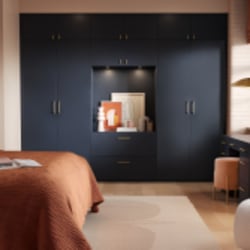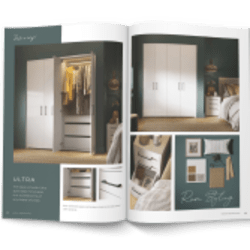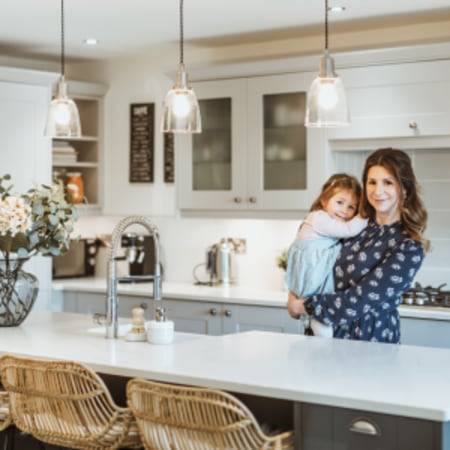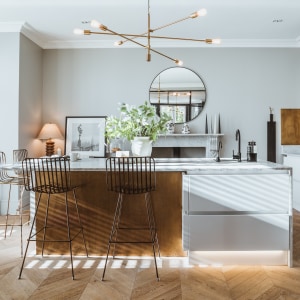Ovens: Buying Guide
Ovens
When it comes to important kitchen appliances, nothing is more vital to your kitchen than a good oven. Without an oven, you wouldn’t be able to cook the food in your fridge, and your dishwasher would have nothing to do. The kitchen is ultimately a cooking space, and a cooking space needs an oven.
Ovens are one of the oldest cooking appliances available, but the technology inside them has come leaps and bounds in the last decades. Even the most economical oven models now come equipped with a suite of high-tech features that enable you to cook complex meals with the push of a button.
However, the addition of steam cooking and precision timers are not the main features you need to consider when deciding between the best ovens available. The best ovens will be capable of heating up quickly, maintaining your desired heat indefinitely, and providing a uniform heat distribution throughout the oven cavity for even cooking. But on top of this, you’ll also need to consider your current kitchen aesthetic and what fuel sources are connected to your home.
So, to help you decide which oven to buy, we’ve combined all the information you’ll need into our oven buying guide to walk you through the different types of ovens available.

Before you start
Naturally, before you decide on which of the best ovens is right for your kitchen, you need to consider two very important external factors: size and budget. While an oven with all the latest bells and whistles might seem like an excellent investment to make the cooking process as simple as possible, picking up a large model that doesn’t fit your space will only be a wasted investment.
A good oven should last you at least a decade, so you want to be sure that the model you pick is the perfect fit for your kitchen.
Size
There are two sizes you need to account for when buying an oven. Obviously, you need to make sure you have the necessary kitchen space to house your chosen oven, but you’ll also need to take into account the internal space of the oven for cooking.
In terms of kitchen space, unless you’re overhauling your entire kitchen, you’ll need to make sure you have the space to fit your new oven. Most ovens measure between 50-60cm in width and 70cm heigh. As long as the space you’ve chosen for your oven matches those measurements, you can be sure of a snug fit. The exceptions to this rule are full oven ranges and certain types of built-in ovens.
A range is a design that includes both an oven and a hob. These are substantially bigger options, often coming with 2-4 ovens, increasing the width to upwards of 110cm but retaining the same average height.
Certain built-in ovens, on the other hand, are designed to be stood at head height. This is most often the case with double ovens stacked on top of each other, which can push the required height space of your oven up to 90cm.
When it comes to internal oven space, ovens are typically measured in litres. On average, internal oven space will range between 50 and 75 litres, but this will be dependent on the different types of oven available. However, it is very important to note that overall internal oven space is not the same as cooking space.
Cooking space is the actual space within the oven that you can cook food in. This is determined by the number of trays and their layout. For your food to cook efficiently, especially in a fan oven, you need to have at least 3cm of space between the top and bottom of your oven and the closest trays. This allows the air to circulate and create an even temperature.
When deciding on which ovens are the best potential fit for your kitchen, makes sure to look for the actual cooking space, particularly if you want to cook large meals.
Budget
Having a budget is always a good idea when shopping for new kitchen hardware. Whether it’s worktops or taps, you need to have a good idea of what you’re going to spend in order to create a budget flexible enough to accommodate your needs.
Oven prices vary quite considerably, based on the features available to different types of ovens. The cheapest ovens can cost as little as £130, but the most expensive models can cost well over £1,000. In general, the best ovens at the lowest price will start at £350. Think about the types of oven out there and how you intend to use yours. Do you really need all the additional features or another smaller oven beside it? If not, then you can either shrink your budget for models with more basic functions but good heat distribution or keep your budget the same and purchase a microwave for a backup cooking option.
When it comes to budget, it’s also a good idea to consider your chosen oven’s yearly running costs. Fortunately, ovens are far more power-efficient than appliances like washing machines and tumble dryers. Electric ovens cost between £40-50 per year to run with gas ovens being slightly cheaper.
Also, to ensure you have enough flexibility in your budget, be sure to account for installation costs. The price of installation will vary between sellers but in some cases, it can cost upwards of £100.
Types of ovens
There are many different types of ovens out there, so when it comes to deciding which ovens are the best potential fit for your kitchen, you need to be sure exactly what your oven needs are. Simply put, the more you intend to cook, the larger the oven you’ll need. You also need to pick between gas and electric ovens, which will be dictated by the fuel options you have available in your house, and whether you want the oven built-in or freestanding.
On top of this, you should also think about how easy the types of oven are to clean, the number of shelves included, and how easy it is to see inside and check the progress of your meal when choosing which oven to buy.
Electric ovens
Electric ovens are by far the most popular type of oven available, with great heat distribution and overall better performance than gas ovens. Electric ovens usually come in the form of convection ovens, using a heat filament and fan to disperse heat evenly throughout the oven cavity. This lets you cook your food faster and at a lower temperature.
The only real downside to an electric oven is their price tag as they’re definitely more expensive to buy and run than a gas oven.
Gas ovens
The cheaper but more traditional form of oven, a gas oven is a good budget option if you do more hob or microwave cooking. They cost much less to run than electric ovens and you can still get fan-assisted gas ovens to help with heat distribution.
However, gas ovens are not offered by many retailers as part of a fitted range, which may limit your options if your heart is set on this option.
Dual fuel ovens
Dual fuel ovens are one of the more unique types of designs available. Typically found in full-size ranges, dual fuel ovens combine a gas hob with an electric oven, giving you the best possible range of tools to cook with. They offer precision heat control and a brilliant cooking speed.
Be aware though that, in order to buy a dual fuel oven, you’ll need a large budget and the space to put it.
Single ovens
Single ovens are the smallest type of oven available, coming in standard and compact forms for really small kitchens. They’re a very flexible option that can sit comfortably under a hob or in a fitting at eye level; and because they’re not attached to a hob like a dual fuel oven, you can put your oven in one place and your hob elsewhere. This makes single ovens great from a convincing and aesthetic perspective.
The primary downside of a single oven is its size. You won’t be able to cook for large numbers of people with a small oven, and because the grill is inside, you won’t be able to use that and oven simultaneously. To rectify this problem, you could purchase two single ovens and position them on top of each other, however, this is will almost certainly double your budget.
Double ovens
Double ovens, on the other hand, are ovens that come with two oven compartments. This allows you to cook different foods in tandem at different temperatures or use the grill with the oven. This immediately makes a double oven one of the best ovens for your kitchen if you plan to cook a lot of food but don’t have the space for a full oven range. Like single ovens, they can be placed under a hob or built into a fitting at head height.
Though, much like a full range, you’ll need to be sure you have the space to fit a double oven. You should also be careful about what brand you buy as some double ovens may have more internal space than a single oven when combine but less actual cooking space.
Oven features
There are plenty of bonus features that you can have installed with your oven. All of these are designed to streamline the cooking experience and make it easier for you to produce brilliant food.
Programmatic timer
While all ovens have an in-built timer to help you deliver food on time, not all of them have a programmatic timer. Setting a programmatic timer allows your oven to turn on and off for a set time, making your oven more efficient and saving you money.
Self-cleaning
Undoubtedly, cleaning your oven is one of the worst chores when it comes to thoroughly wiping down the kitchen. That’s why many more modern ovens now come with a variety of self-cleaning options.
At a very basic level, you can purchase an oven with easy-clean enamel which prevents grime from sticking, making it easy to wipe off. Alternatively, you could opt for an oven with catalytic liners. These liners break down residue over time when you cook at high heat so that it takes little effort to clean off. And if you want to be really fancy, you can buy an oven with steam cleaning, which uses a combination of water and steam to dislodge grime that can then be cleaned up.
But if you want the most popular form of self-cleaning oven system, then you should buy an oven with a pyrolytic cleaning option. Pyrolytic cleaning works by super-heating the oven interior to burn everything inside to ash. This ash can then be swept up by hand, leaving your oven spotless.
Digital controls
Digital controls are brilliant addition and are part of the reason electric cookers are more popular than gas. While gas ovens use twistable knobs with painted markings to show temperature ranges, digital controls let you set the precise temperature for precision cooking. Some even come with preinstalled recipe options, and they give a far more streamlined feel to your oven.
Steam cooking
For really crispy oriental food, you might want to invest in an oven with a steam cooking feature. Steam cooking works by injecting bursts of steam into the oven cavity. This moisture then settles on the food before evaporating leaving the surface crisp and the interior cooked to perfection.
Smart ovens
And last but not least, for a really modern oven, you can find many models that offer smartphone connectivity. This lets you adjust your oven temperature and timers on the fly while on the go or in another room.
Where to buy an oven
When buying an oven, you can find a huge range of brands from all good kitchen retailers. At Wren Kitchens, we stock a vast range of ovens for you to buy. New oven options include numerous bonus features as well as finishes that can go with any kitchen style. Speak with our team today and let us know exactly what you’re looking for. We’ll help you find the best oven to fit your dream kitchen.
Here at Wren Kitchens, we have a dedicated team of experts with decades of experience behind them in helping people find the right appliances for their kitchens. If you’re looking to build your dream kitchen, get in touch and book an appointment at one of our showrooms.
Of course, it’s not just an oven that makes a kitchen. You can look at our range of microwaves right here or read our other buying guides. For even more ideas on how to spruce up your kitchen, you visit our inspiration section.













